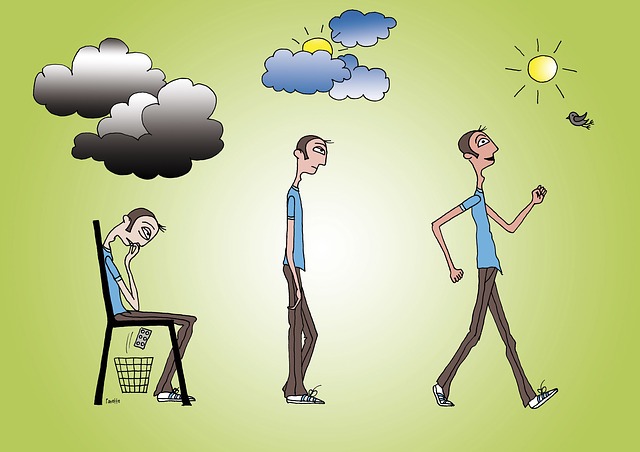Trauma is a complex area and the process of recovery is rarely linear. It often involves progress/regress over an extended period, sometimes a lifetime. Various experts have studied trauma and its impacts from multiple perspectives, drawing on research, clinical practice and reflection on their personal experience. They have adopted different approaches to facilitating recovery from trauma, recognising that the experience of a traumatic event and its subsequent impacts vary from individual to individual. Health Means bring many of these conceptual and practical perspectives together in their Biology of Trauma 2.0 Summit.
Recovering from trauma and its impacts
There can be differential impacts for people witnessing the same traumatising event, such as a mass shooting, sudden death of a close relative or a car accident. The depth of trauma response, according to Bruce Perry, is influenced by the timing, pattern and intensity of the initiating event as well as the degree of mitigating factors, especially “relational health” – the quality of connectedness and of supportive relationships. In his view, “connectedness can counterbalance adversity”. Improving relational health with a therapist as well as supportive others is a key element in recovering from trauma. Dr. Elena Villanueva provides a pathway to relational health by offering a group-based recovery process, incorporating facilitation by health experts and a personal care plan. Her holistic process is offered in the form of a Mind/Body/Energy Program. Bruce Perry is a co-author with Oprah Winfrey of the book, What Happened to You: Conversations on Trauma, Resilience and Healing.
Bessel van der Kolk places considerable emphasis on the “visceral impact” of trauma – the generation of deep inner feelings. He argues that recovery processes should focus on the “emotional brain”, rather than the “rational brain’. He maintains that the mind-body influence is bi-directional and that a person can experience “visceral overload” when exposed to a traumatic event. He suggests employing healing modalities that recognise the mind-body-emotion connection, such as movement (e.g., Tai Chi), singing or chanting, and a wide range of mindfulness practices. Bessel is the author of The Body Keeps the Score: brain and body in the transformation of trauma.
Dr. Arielle Schwartz draws on neuropsychotherapy when treating traumatised people. This integrated mind-body approach incorporates psychotherapy practices along with neuroscience findings. She contends that it is possible to develop resilience through trauma recovery. Her approach is multi-modal, incorporating practices as diverse as exploration of family history, Eye Movement Desensitization and Reprocessing (EMDR), somatic therapy and mindfulness. Relationship building, positive psychology, reflection, reprocessing and resilience development are integral to her approach. Arielle is the author of The Post-Traumatic Growth Guidebook: Practical Mind-Body Tools to Heal Trauma, Foster Resilience and Awaken Your Potential.
Gabor Maté agrees with the approach of exploring what happened to a traumatised person, rather than trying to find out “what’s wrong with them”. He also adopts a non-judgmental approach to addiction, asserting that many people who suffer from addiction have experienced trauma in their life. In line with this thinking, he adopts and teaches an approach he calls “compassionate inquiry” which among other things helps a person to discover their “negative self-messaging” resulting from the experience of trauma. He aims to help the traumatised person to confront and name the underlying pain resulting from an identified trauma. He also employs a holistic approach incorporating “body-work”, mindfulness, connection with nature and self-care approaches such as proper nutrition and stress management. Gabor is the author of In the Realm of Hungry Ghosts: Close Encounters with Addiction.
Trauma-Sensitive Mindfulness
David Treleaven, creator of the Trauma-Sensitive Mindfulness Podcast, discusses the importance of understanding the window of tolerance when working with people who have experienced trauma. The window of tolerance is the level of arousal that an individual can tolerate in a productive way – they are able to share, process, and receive information when they are within this personally tolerable zone. Trauma, such as that suffered by some people during the pandemic, reduces the window of tolerance. David stresses the need to offer people who have been traumatised a choice of meditation anchors to avoid unconsciously triggering a trauma response. He is also acutely aware of the need to ensure that mindfulness practices are accessible for people with disabilities, especially physical disabilities. David is the author of Trauma-Sensitive Mindfulness: Practices for Safe and Transformative Healing.
There is widespread recognition that various forms of mindfulness can assist in trauma recovery. However, researchers and clinical practitioners such as Sam Himelstein, who has dedicated many years to working with traumatised teenagers, highlight the need to tread cautiously and sensitively when dealing with people who have experienced trauma. Sam offers insightful principles and guidelines for trauma-informed mindfulness. He found too that in some situations a conventional approach to mindfulness would not work as it would take a traumatised teenager outside their window of tolerance. He found, for example, that listening to music together built a connection and a trusting relationship so that the impacted teenager felt free to begin sharing both their trauma experience and what was happening for them. Sam is the author of Trauma-Informed Mindfulness with Teens: A Guide for Mental Health Professionals.
Reflection
Recovery from trauma frequently involves some form of somatic therapy such as somatic meditation, resting in your body or resting in your breath. This is often supplemented by other therapies that address the visceral impact of trauma, negative self-thoughts, supportive relationships and the flow of energy in the body. Overall, the complexity of trauma suggests the need for a holistic approach, as adopted by most of the practitioners discussed in this post. Health practitioners are becoming increasingly creative as they develop a deepened understanding of trauma and its impacts.
Underpinning many of the approaches discussed is mindfulness practice in one form or another. It is acknowledged that as we grow in mindfulness, we can identify our own traumas and their impacts, strengthen our connectedness and relationships, build resilience and adopt a positive mindset. Dr. Edith Eger, Auschwitz survivor and author of The Choice: A True Story of Hope, encourages us to explore our “inner landscape” and move from a victim mindset to true freedom.
Sounds True offers a Healing Trauma Program conducted by 13 of the world’s top trauma recovery experts including Gabor Maté, Jeffrey Rutstein, Peter Levine and Arielle Schwartz. The program offers practices, skills and tools that have proven effectiveness. The time frame for the program allows you to lean new behaviours and put them into practice, as well as offering Q & A sessions to explore what worked for you and any blockages to your progress.
Sounds True also offers a shorter 8 week course, Trauma and the Embodied Brain, conducted by Bonnie Badenoch, PhD – therapist, consultant, trainer and author of The Heart of Trauma: Healing the Embodied Brain in the Context of Relationships.
________________________________
Image by Gerd Altmann from Pixabay
By Ron Passfield – Copyright (Creative Commons license, Attribution–Non Commercial–No Derivatives)
Disclosure: If you purchase a product through this site, I may earn a commission which will help to pay for the site, the associated Meetup group, and the resources to support the blog.

